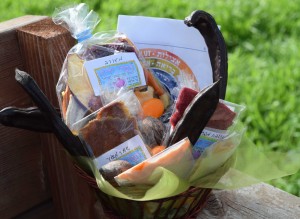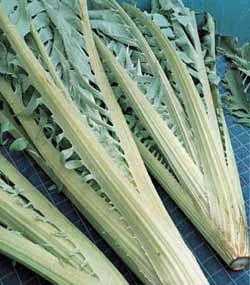 Tu B’Shvat is almost here, and Melissa of Mipri Yadeha offers holiday baskets from the best of Israel’s products: organic dates, naturally dried raisins, carobs, nuts in their shells, and of course, her home products of naturally dried fruit and fruit leather with no additives, in a wide range of amazing flavors.
Tu B’Shvat is almost here, and Melissa of Mipri Yadeha offers holiday baskets from the best of Israel’s products: organic dates, naturally dried raisins, carobs, nuts in their shells, and of course, her home products of naturally dried fruit and fruit leather with no additives, in a wide range of amazing flavors.
Each basket costs 60 NIS. Orders can be made via our order system. Happy Birthday, dear trees!
___________________________________
Petach Tikvah, Here We Come!
Chubeza is proud to be opening a new delivery line to PetachTikvah, once every two weeks, beginning February. Tell your friends to join our growing community!
____________________________________
House of Card(oon)s!
There are vegetables we have been growing since Day One at Chubeza, thirteen years ago. They are our veteran veggies and we are happy to see them every year. But there are also those which we only started growing in our early years of existence. Those vegetables were chosen carefully, sometimes out of longing, at times with wariness. How will they grow? Will the outcome be beautiful and tasty? How will they be received by you? Usually, they are not of the “normal” everyday produce varieties.

Thus were the artichoke, Jerusalem artichoke, “baby” mesclun greens, Chinese (mustard) cabbage and once even the chicory added to our roster… This week you will receive the cardoon, aka artichoke thistle, cardone, cardoni, carduni, or cardi, or… not known at all. He’s simply not the most outgoing type, but rather an exclusive and remarkable vegetable known mostly to traditional cooks, Baladi and “old school” vegetable enthusiasts, and those of you searching for unique products at the market.
The cardoon, or wild artichoke, is actually a brother to the artichoke. Like any sibling, they are similar though different. Basically, their plants are rather similar, but the cardoon invests a lot of effort into its leaves and stems, making him taller than his brothers with larger, more erect leaves and a thicker spine. The cardoon does produce artichokes, but usually they’re tiny, more for decorative purposes, without much actual food content. In our field, at the end of the artichoke beds we planted a row of cardoon, and when they’re standing beside each other you can definitely notice the difference.
Those who already know me recognize that I learn a lot about life and parenting from our plants in the field. In this case too, the mother and father of the artichoke and cardoon, i.e., the farmers who cultivated them over the years, saw that different children in their bed boast different characteristics and tendencies. Instead of asking the cardoon, “Why can’t you just grow nice thistles like your brother, the artichoke?” (or the other way around), the farmers of old chose to cultivate in each the stronger virtues, and thus they were rewarded. Big time. The dinner table received a larger variety of foods, which are both tasty and a delight to lay eyes upon.
The cardoon has been eaten wild since ancient times, probably cultivated from the Middle Ages. It is joyfully eaten in Greece, Italy, France, South Africa and Spain. The edible part is the chubby spine in the center of the leaves, which was eaten raw, cooked, baked, steamed or fried from the time of the Roman Empire. It was so greatly admired that it inspired farmers to develop a substitute – the Swiss chard… and this is how it happened: The Romans took along their culinary habits and recipes everywhere they went. But the cardoon, like his brother the artichoke, cannot grow in the frigid North, being very sensitive to cold weather. Thus, Northern Europe needed a substitute, which became Swiss chard. It, too, hosts a thick and juicy stalk and can be eaten raw, steamed, fried or baked. The flavor, however, is not at all the same. Cardoon tastes like… well, artichoke, while the chard stalk tastes altogether different. But as we all know, we start eating with our eyes, and when longing overcomes us, the substitutes can be convincing. This is how Swiss chard received its name, “chard,” resembling the “cardoon.”
How does one cook the cardoon? Remove the leaves from the stem (they can be used in some recipes), and peel to remove the fiber in the skin. You can use a sharp knife or peeler, but don’t over-peel. Remove only a thin layer so you still have what to enjoy when you’re done. Place the peeled cardoons in water and lemon juice to prevent blackening. Blanch the cardoons in boiling water for fifteen minutes and drain. They’re all yours now – cook them with tomatoes, chickpeas, fava beans or Jerusalem artichoke. Cardoon can be added to chicken or meatballs, even fish. You can stuff it (the stems can be used as a little stuffing boat), fry as you would a schnitzel, make cold salads etc. etc.
We’ll soon be adding some cardoon recipes to the website. In the meantime, check out the Internet for cooking and serving suggestions. Bon appetite!
This point in winter is also the arrival time for more first-of-the-season veggies. Chinese peas are beginning to ripen (it takes some time in the beginning, do not despair) and a first harvest of beautiful, tasty fava beans has just been completed and already brought to our packing house. What fun!
Enjoy a healthy, wintery and great week,
Alon, Bat Ami, Dror, Yochai and the Chubeza team
__________________________________
WHAT’S IN THIS WEEK’S BOXES?
Monday: Broccoli, coriander/parsley/dill, tomatoes, baby greens (mesclun mix)/Chinese cabbage, kale/spinach/Swiss chard, cucumbers, kohlrabi/ fennel, leeks/onions, cauliflower, sweet red peppers. Small boxes only: celery stalk.
Large box, in addition: Cabbage, cardoon, baby radishes, Chinese peas/ fava beans/beets.
Wednesday: onions, cucumbers, Swiss Chard/kale/spinach, tomatoes, broccoli, Chinese cabbage/ greens (mesclun mix), red bell peppers/potatoes, cauliflower/cabbage, celery/celeriac/cardoon, cilantro/parsley/dill, small boxes only: kohlrabi/fennel/turnips.
Large box, in addition: leek, lettuce, snow peas/carrots, beets/radishes
___________________________________
Cardoon recipes:
Honeyed cardoons with pine nuts and thyme (scroll down)
